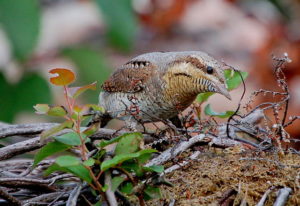
The Eurasian Wryneck is a drab black-and-cream bird in the woodpecker family without the woodpecker’s typical coloring, long bill, or pecking habit. She forages on the ground and appropriates abandoned tree cavities. She twists her neck in an uncanny way and for this reason she has traditionally been used in reversing spells, especially spells to win back an errant lover. In one of the Greek epics the unwilling heart of Medea, a witch-protégé of Circe and priestess of Hecate, is won using a Wryneck spell. In another myth the goddess Hera changes the nymph Iynx into a Wryneck in retaliation for messing up Hera’s love life. Iynx’s name is the root of the English word “jinx.”
Although the Wryneck sounds like a woodpecker and is placed in the woodpecker family by modern taxonomists, it is unclear how the ancients linked the two. Pan, son of Dryope, is father of Iynx, so they seem to have some relation.





